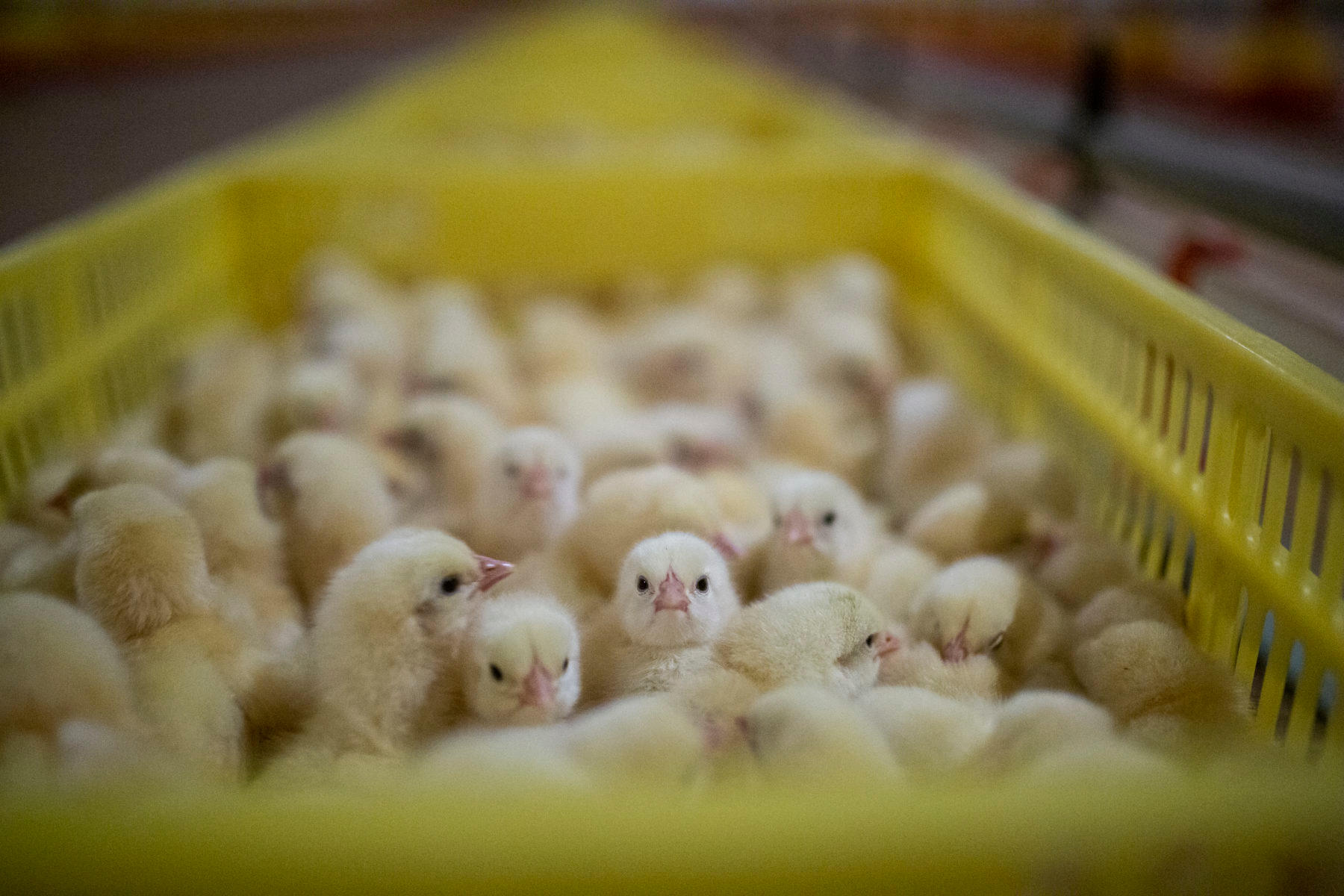




The term “food desert” brings to mind a scorching, arid landscape with nothing to see for miles. But the truth is that food deserts exist all over the country, in all sorts of environments, and have severe health impacts on the people who live there.

In the United States, a staggering 42% of adults are affected by obesity, while 10.5% of all residents are food insecure. The two phenomena might seem like complete opposites—one associated with too much food, and the other too little—but they’re more connected than you might expect. Researchers think that the link comes down to location and access. People who live where good, hearty food is available and inexpensive tend to have very different diets from people who live where high-quality food is either unavailable or too expensive—otherwise known as a “food desert.”
What Is A Food Desert?
A food desert is an area where people have very limited access to healthy, affordable food. Somebody living in a food desert faces daily obstacles preventing them from going to a grocery store and buying fresh, nutritious foods like fruits and vegetables.
Maybe the closest supermarket to your home is more than 10 miles away, and you don’t own a car to get there. Or maybe your neighborhood lacks reliable public transportation, and the only place you can get on foot is a fast food restaurant. Either way, living in a food desert means it’s harder than it should be to maintain a well-rounded, sustainable diet.
What is the difference between food deserts, food swamps, and food insecurity?
Food Deserts
The [USDA identifies](https://www.ers.usda.gov/data-products/food-access-research-atlas/documentation/#:~:text=the%20nearest%20supermarket.-,Low%2Dincome%20census%20tracts%20where%20a%20significant%20number%20(at%20least,more%20than%201%20mile%20or%2010%20miles%20from%20a%20supermarket.,-Low%2Dincome%20census) two types of food deserts:
- Low income, urban areas where a significant number of people lives farther than a mile away from the nearest grocery store
- Low income, rural areas where people live more than 10 miles away from the nearest grocery store
Food Swamps
Unlike in food deserts, people in food swamps do have access to healthy options like fruits and vegetables. The problem is that they are flooded with less nutritious alternatives like fast food restaurants and convenience stores that sell junk food and soft drinks.
Food Insecurity
Food insecurity is defined as a “lack of consistent access to enough food for a healthy, active life.” Food insecurity is a much broader, more complex topic than food deserts alone.
A parent who can’t afford to buy groceries because their child requires expensive medication for a chronic health issue; a lower income household that skips meals to avoid having the utilities shut off; a person without access to affordable housing and therefore doesn’t know when their next meal is coming: All of these are forms of food insecurity.
Where are food deserts located?
Food deserts can be found all over the country in big, densely populated cities or in sprawling, rural towns. Wherever they are, they tend to disproportionately affect Black and Brown communities.
Rural parts of the West, Midwest, and South have the highest concentration of food deserts. Experts think that food deserts are somewhat less prevalent in the Northeast region of the country because the people who live there are not as geographically spread out.
What are some examples of food deserts?
Chicago
In the third most populous city in the US, more than 500,000 residents live in food deserts. Another 400,000 live in neighborhoods where grocery stores are sparse and fast food far more convenient. According to a recent study, on the average block with predominantly Black residents, the closest grocery store is twice as far away as the nearest fast food restaurant.
Mississippi Delta
The USDA found that, out of the entire country, Mississippi had the highest percentage of its population living in a low-income, low-access area. The issue is perhaps most acute in the rural Mississippi Delta region, where counties average one supermarket per 190 square miles.
New York City
Hundreds of thousands of New Yorkers live in food deserts. Many residents rely on small corner stores known as bodegas—which tend to sell more microwavable meals and junk food than healthy, fresh produce—because larger supermarkets are too hard to get to or too pricey.
Rural New Mexico
About three out of every 10 New Mexico residents live in a food desert. The COVID-19 pandemic has only exacerbated the situation. Many grocery stores were forced to shut down operations temporarily as cases spread. Some stores never reopened, and those that did have struggled with keeping shelves stocked with a disrupted supply chain.
How many Americans live in food deserts?
The USDA estimates about 19 million residents—6.1% of the population—live in low-income, low-access areas and have trouble getting to a grocery store.
What causes a food desert?
Income level
High quality, fresh groceries tend to be more expensive than less healthy alternatives. A lack of income means a lack of access to healthy food.
Transportation
In an urban food desert, unreliable public transportation is the main issue. In rural food deserts, it’s low vehicle ownership. In 2012, the number of households without a car was 25% higher in food deserts than the rest of rural America.
Grocery store locations
Grocery store owners avoid opening up shop in food deserts because market research suggests more affluent areas are more profitable. Some common characteristics across food deserts—smaller populations, lower rates of employment, higher rates of poverty—are the same characteristics that scare off retailers.
How do food deserts impact health?
Not only are grocery stores harder to find in food deserts, but the fresh, nutritious products they sell are more expensive than processed foods. Consistently eating foods that are high in salt, sugar, carbohydrates, and trans fats can increase your chances of:
- Obesity
- Type 2 diabetes
- Cardiovascular disease
- High blood pressure
- Various types of cancer linked to obesity
Food desert facts
- The top 10 biggest cities in the US all contain food deserts.
- Gentrification can lead to “food mirages,” areas with high-priced grocery stores and lower income residents who can’t afford to shop there.
- Some researchers and activists choose the term “food apartheid” over food deserts because food deserts disproportionately affect communities of color.
- Indigenous peoples of America live farther away from grocery stores than any other demographic. 12% of American Indians and Alaska Natives live 20 miles or more from their nearest grocery store.
- Low access to healthy food is just one more barrier to a healthy lifestyle in communities that are also “more likely to have poor access to health care and fitness facilities.”
How can food deserts be eliminated in America?
As unsuccessful federal initiatives have shown in the past, simply increasing the number of grocery stores isn’t enough to change people’s dietary habits.
There seems to be more hope, however, when local residents tackle the issue together. Here are some promising ways that food desert communities have come together to solve the problem in their own backyards:
Community gardens
Cropping up throughout the country, many residents of food deserts have increased their access to fresh, healthy produce by growing it themselves and distributing it to their neighbors. By getting youth involved, these gardens act as educational tools, vital sources of nutrition, and places of community empowerment.
Co-ops
Recent grocery store closures in the rural Midwest have created food deserts even in towns where agriculture is the primary industry. In farming communities like Winchester, Illinois, local residents are combating food deserts by opening up collectively owned and operated markets. Local residents team up as both the suppliers and customers of these markets.
Smaller grocers
Just because a store is smaller and more convenient, doesn’t mean it can’t be a source of nutrition to its customers. There’s a city-wide initiative in NYC to restock the shelves of corner stores and bodegas, replacing processed meals and junk food with fresh, healthy, affordable options.
What we can do
Food deserts are a complex issue and a symptom of broader problems like income inequality and systemic racism. These structural inequalities are endemic to our broken food system, which places profit ahead of the well-being of people, animals, and our environment.
For years, researchers have struggled to find the best way of measuring and defining food deserts, so figuring out a solution is going to be even more of a challenge. One thing is clear, however. There’s no easy, one-size-fits-all fix.
In addition to local, grassroots efforts, eradicating food deserts means improving local infrastructure like transportation and internet access. It means reversing discrimination against communities of color. And it means giving children a better education on the importance of nutrition.
Food desert communities don’t just need another grocery store. They need holistic solutions that incorporate residents and prioritize their health. By supporting initiatives like community gardens, shopping local, and raising awareness for the ways our profit-driven factory farm system harms communities, we can rebuild our food system from the bottom up—nourishing ourselves in a way that is good for the planet and good for us all.





